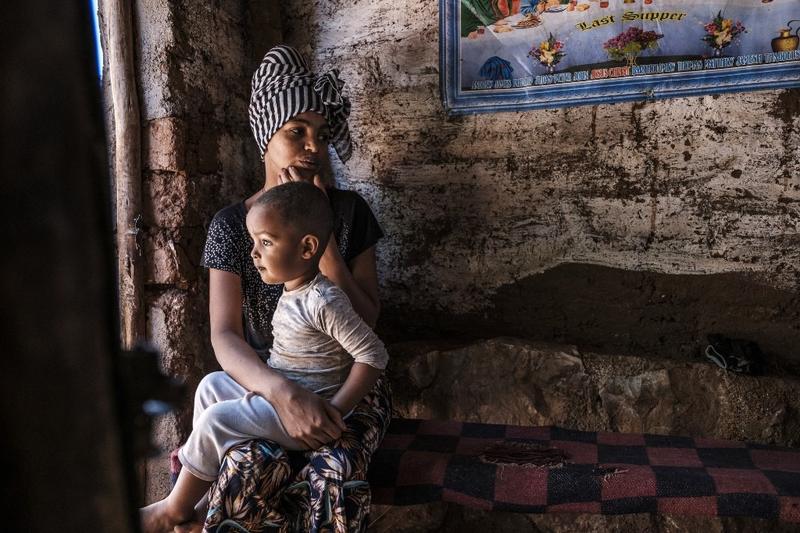 An Eritrean refugee woman seats with a child at the door of a house at Mai Aini Refugee camp, in Ethiopia, on Jan 30, 2021. (EDUARDO SOTERAS / AFP)
An Eritrean refugee woman seats with a child at the door of a house at Mai Aini Refugee camp, in Ethiopia, on Jan 30, 2021. (EDUARDO SOTERAS / AFP)
Millions of people across Kenya, Somalia, Ethiopia and Sudan are likely to face extreme hunger in the coming months, warned global humanitarian aid organization International Rescue Committee.
The organization attributed the likely situation to ongoing conflicts in parts of the countries coupled with multiple seasons of drought.
"We're extremely worried about the impact of continuing drought and conflict on vulnerable populations throughout the Horn of Africa, where a large proportion of the population relies heavily on crops to eat and sell for their livelihoods," said Kurt Tjossem, the organization's regional vice-president for East Africa, in a statement on Tuesday.
Tjossem said 2.1 million people in Kenya alone, including refugees from neighboring countries, will face extreme hunger in the next six months due to poor rainfall and low crop production in the last few months.
The October-December 2020 short rains and the March-May 2021 long rains in Kenya were dismal. Both seasons were characterized by late onsets and below average cumulative quantities.
The Kenya Meteorological Department projects that the October-December 2021 rainy season will also be poor, consequently leading to below-average harvests and worsening livestock conditions in northern and eastern Kenya.
Harvests hit
In Somalia, 3.5 million people are facing hunger due to a reduction in harvests. Additionally, farmers who depend on livestock are witnessing their animals dying from thirst on a daily basis. Riverine areas in southern Somalia that typically produce offseason crops are also facing multiple challenges.
According to food insecurity analysis website Famine Early Warning Systems Network, both cereal and cash crop production along the Shabelle River have been severely affected by poor rainfall, inadequate and costly irrigation, and episodic river flooding.
Cereal and pulse production in southern Somalia and southeastern Kenya ranged 30 to 50 percent below average during the July-August 2021 harvest.
In Ethiopia's Oromia region, severe drought is exacerbating hunger amid the largely agropastoral-reliant population. With funding being diverted to the war-torn northern part of the country, people are left at risk of extreme hunger.
Tjossem said rising fuel prices, currency depreciation and inflation have worsened the situation.
"In Sudan for example, hunger needs are up to 60 percent higher than the last five-year average due to inflation and the economic and current political crisis in the capital," he said.
edithmutethya@chinadaily.com.cn


